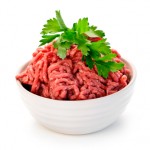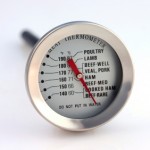I started to write a post on arsenic in baby food since there's been a spate of recent articles on this issue appearing both in newspapers and online (the AMA Morning Rounds email I receive started me thinking of the subject). But, as usual, when I began to pursue a topic, I found there was both a long history I needed to cover and, in this case, a worldwide problem that should be discussed.
Human industrial use of arsenic dates back 5,000 years. I found the Harvard Arsenic Project has a thorough coverage of varying aspects of our utilization of this element, both beneficial and detrimental. It has been used as a poison for many centuries since it has little if any odor or taste, especially when mixed with food or wine. A Roman leader named Sulla outlawed arsenic poisoning in 82 B.C., to no avail. In Italy in the 15th and 16th centuries, the Borgias, especially Pope Alexander VI and his son, Cesare were said to have killed scores of bishops and cardinals by liberally lacing their wine with arsenic; then, by Church laws, they owned the property of their victims.
Roger Smith, a Dartmouth Medical School Emeritus Professor of Pharmacology and Toxicology has published an online discussion of the uses of the element with the gripping title, "Arsenic: A Murderous History."
Scientifically it is classed as a "heavy metal." Nowadays we think of that term as referring to a form of music. But from the chemistry pound of view it actually is one of a group of elements that, volume for volume, are at least five times as heavy as water. Iron, lead and mercury are in that group, but so is arsenic.
If you were to ingest arsenic, diluted in wine or water, at an incredibly small level, 60 parts per million, you would develop belly pain, nausea, diarrhea and then die. Until a few years ago the US drinking water limit was 50 parts per billion. Then in 2000 the EPA proposed all 54,000 community water systems in this country should cut their arsenic levels to no more than 10 parts per billion.
Our local water lab just told me our Fort Collins levels are less than 1 part per billion. That's clearly not true elsewhere in the world. Over 137 million people in 70 countries are exposed to toxic levels in their drinking water. Bangladesh has the most well-known problem. When more than eight million deeper wells were dug in the 1970s and beyond, as an attempt to lower the infant death rate from ineffective water purification, arsenic replaced infectious diseases as a major threat. The drinking water for more than 30 million people had levels over 50 parts per billion.
So they potentially could develop chronic arsenic effects include skin, lung, kidney, liver or bladder cancers and perhaps a variety of cardiovascular and respiratory diseases.
We've a long, long ways to go before we solve the issues raised by arsenic.





